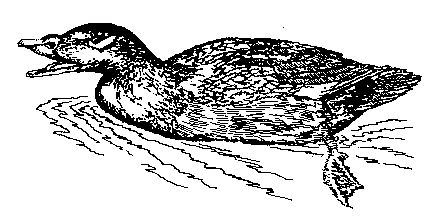|
| ||||||
Special | A | B | C | D | E | F | G | H | I | J | K | L | M | N | O
P | Q | R | S | T | U | V | W | X | Y | Z | ALL
White-winged Scoter:
Tamgaalu{ - Metanitta deglandi Tamgaalu{ ala}um saa aku{, ala}um uhlii kugan aku{ uku}aza{. Tamgaalum ali}ingis hakangis huzuu qaxchikdakus, dagan imunagan hakangis quhmal, igasigan agalan utmaa hakangis ila{tangis quhmazas. Hingamataku{ kitakix ama hiyukaa uluudam angalidigaa ama qaxchikda{ aza{. Hagumatakus tamgaalum ayagangis, kaaxadgim ayagagan angunaa liidazas, chumnugim qaxchikdaa angali{tazas. Tamgaalus, sam aIa}um qamdagan ilan aatungis azas. Sas malganangis ilagaan chlaqatuzas, hagumakus mal hakangis hitmilgangis amnizas. Qan'gim aslaan hasinal haang anas agudix, qanikinga masxal aguun liisnaqadazas. Chugum hadan al slunas agudix. Saaqudikinga masxal aguun udaa}aa}utazas. Sam kayutungis azas, kalulgal ala}um kugan itxisxaqas agudix, hamang ala}um ilan chla{s uku}aqadazas. Tamgaalus udang saahmla}iza}ulas, chugaanul taaman hamang ilan saahmIa}izamchix ilan saahmla}izas. Tamgaalu{ hatim siching aaka{. Saahmlam uluudam angalidigana{ liidangis mataza}.
White-winged Scoter - Melanitta deglandi The white-winged scoter is a saltwater duck. This duck likes to stay in deep water. The drake white-winged scoter is all black in color. It has white feathers around the eye region. It also has white feathers on the back middle part of its wings. Its feet and its bill are pink and black in color. The hen is similar to a harlequin hen, and it is brown in color. The white-winged scoter is a duck that prefers the deep water. It dives more often than other ducks. It is also very hard to pluck their feathers. During the winters, they are seen in great numbers around the village. When spring comes, their numbers decline. They spend their summers up in northern Alaska, and they return to Atka once again in the fall. They are strong ducks. When the are shot, they dive underwater not to be seen again. They do not nest around this area. They go north to their nesting ground to have their eggs there. They usually lay about nine to fourteen pinkish eggs. |



 At{am Sangis
At{am Sangis